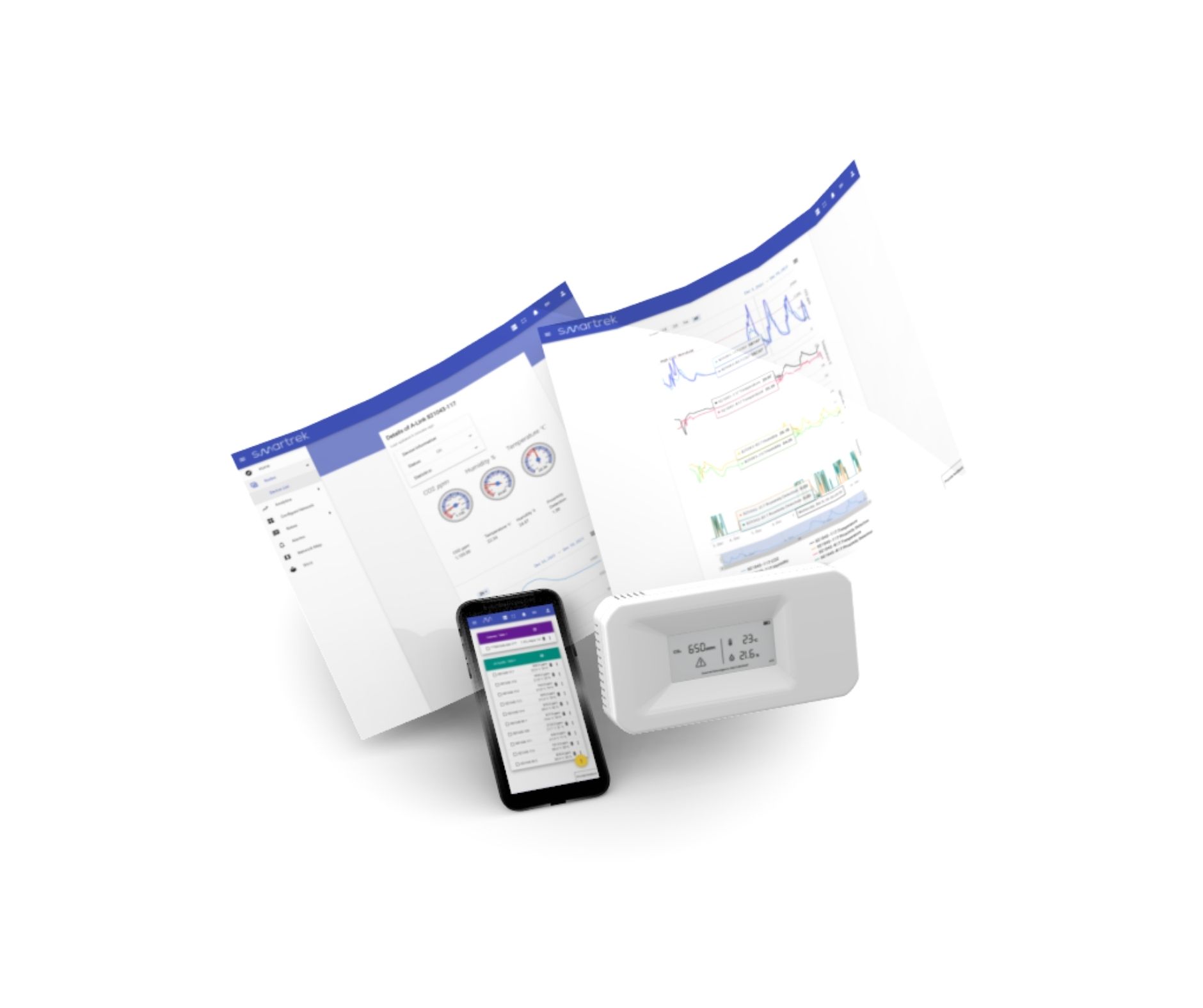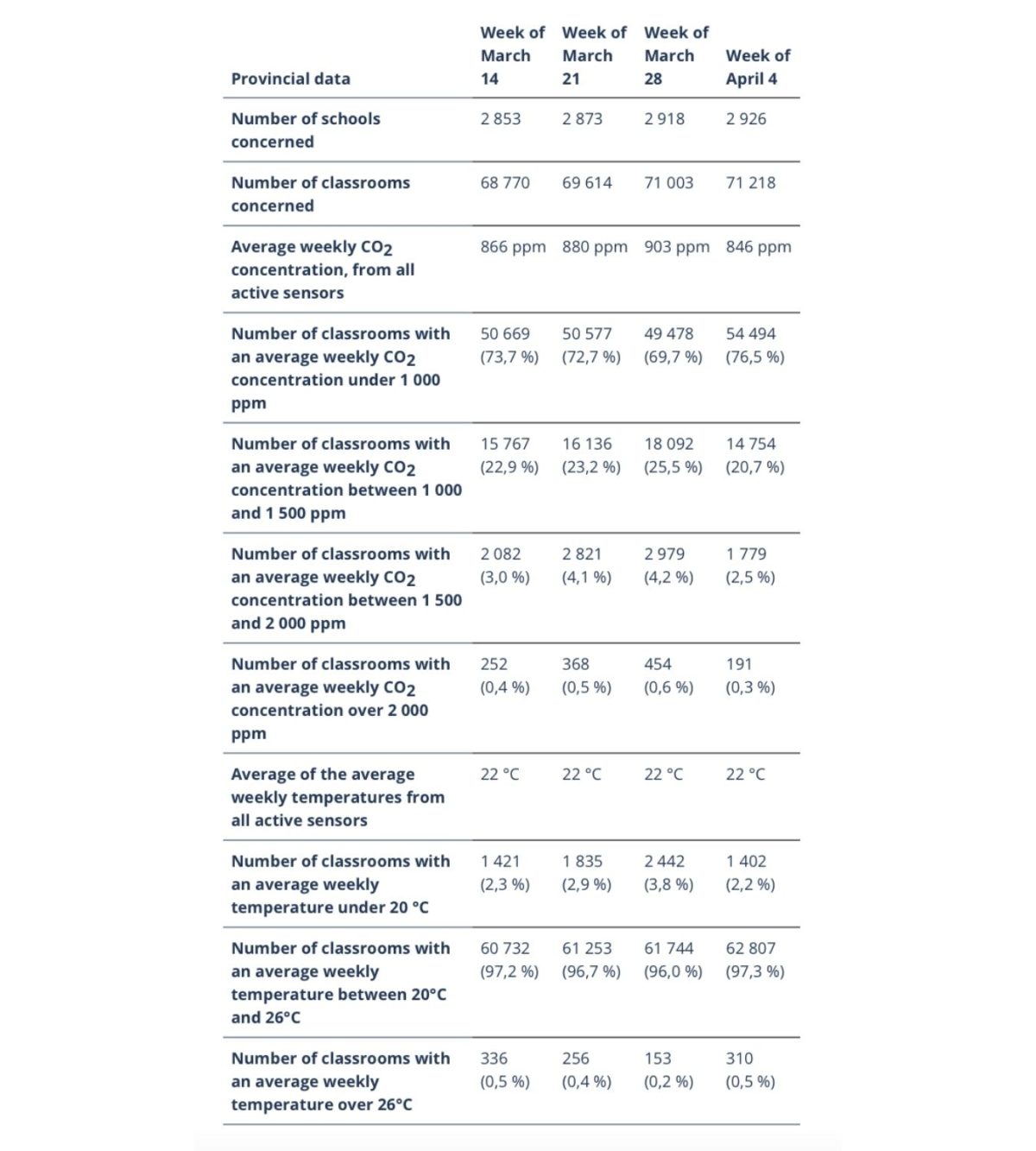Indoor Air Quality – Background:
Our case study explains why it is essential to implement good indoor air quality. In recent years, the international scientific community, political institutions, and environmental authorities have paid particular attention to indoor air quality (IAQ). Moreover, the SARS-CoV-2 virus has only accentuated this trend.
COVID-19 reiterated the importance of ensuring good indoor air quality as well as ensuring safe environments for all occupants.
In 2021, the Government of Quebec had taken on the challenge of increasing its focus on IAQ in classrooms and ensuring ongoing monitoring. Through an understanding of the situation of younger children, the government sought to expand its knowledge of IAQ in closed environments, as well as the long-term health and developmental risks of poor IAQ. It should also be noted that while standards exist in many countries for indoor air quality in school buildings, they are rarely thoroughly evaluated after occupancy.
On September 10, 2021, the Ministry of Education announced agreements with four companies, including Smartrek. These companies supplied the estimated 90,000 IAQ monitors that have been installed in all preschool, elementary, secondary, and adult education classrooms in Quebec. The Quebec government is the first in Canada to take such action to ensure a healthy environment.
Concerns:
Numerous comparative studies on the risks of poor indoor air quality have led to its ranking among the top five environmental risks to public health. In addition, indoor air complications can be subtle and do not always produce easily recognizable effects on health, well-being, or physical condition.
Therefore, monitoring IAQ in classrooms is a crucial element for the health and performance of students. Note that indoor air pollution can lead to both short-term (headaches, fatigue, shortness of breath, congestion, coughing, dizziness, and more…) and long-term health complications for students and faculty.

Smartrek Indoor Air Quality Solution
Our case study pays particular attention to students and the environments where they frequently spend most of their time. As you are well aware, children’s developing bodies can be more receptive and sensitive to their environment than adults. Children breathe more, eat more and drink more. As a consequence, air quality is of particular concern.
Smartrek has responded by developing a new turnkey solution for continuous air quality monitoring in over 1400 schools across Canada. This solution ensures that students and school staff have the best possible learning and working conditions in the classroom.
What sets Smartrek apart from other companies is its SpiderMesh wireless technology. It is a monitoring system that provides scalable, self-contained connectivity with unmatched monitoring and alerting capabilities. The system is feature-rich and offers a state-of-the-art turnkey solution.
Our monitor is remarkably accurate and foolproof, with state-of-the-art technology to monitor CO2 levels, temperature, and humidity. In addition, thanks to its reliability, ease of use, and environmental robustness, our monitor is accessible and easy to interpret for everyone. Backed with an alarm system, Smartrek – Indoor Air Quality allows managers to act quickly and accordingly when high CO2 levels are detected, ensuring the safety of children and students.
School service centers will be able to use accurate and reliable data to identify trends and buildings that require intervention plans. Each of these IAQ services and products works together to create a healthy indoor environment and assess the influence of IAQ on occupant health, comfort, and safety, as well as on building occupant productivity.
The results of implementing Smartrek Indoor Air Quality Monitor:
The numerous monitors set up in the schools have raised awareness of the key factors necessary for progress:
For example, an average daily CO2 concentration below 1500 ppm can be used as an adequate comfort parameter. It should also be noted that the optimal target for new buildings is an average daily CO2 concentration of less than 1000 ppm and a relative humidity level between 30% and 50% depending on the season. Finally, an ambient temperature between 20 and 24 degrees is highly recommended.
National data show that* (1):
- On average, more than 96% of the facilities had a weekly average CO2 concentration below 1,500 ppm, indicating adequate air quality;
- On average, less than 0.45% of facilities had a weekly average CO2 concentration greater than 2,000 ppm ;
- More than 96% of facilities have an adequate weekly average temperature (between 20°C and 26°C) ;
- Since the week of January 24, 2022, the data has been relatively stable from week to week, with a slight improvement in the last week;
- The arrival of warmer temperatures has positively impacted air quality during the week of April 4, 2022.
Based on national and general data, it can be concluded that most classrooms in Quebec have adequate air quality.

Conclusion:
If we are to provide a healthy environment and high-performance, sustainable buildings for students, it is essential to emphasize the commitment and expertise of all members of the building community, including building managers, architects, engineers, policymakers, and building occupants.
Neglecting IAQ can have a negative impact on the health, comfort, and productivity of building occupants. Therefore, this attitude is contrary to the overall goal of building design, which is to ensure the serenity and well-being of its occupants.
In conclusion, let’s be mindful of the indoor air quality of the space we live in to counteract any adverse effects on our health, comfort, and productivity. By using our wireless technology, you ensure your current and future well-being.